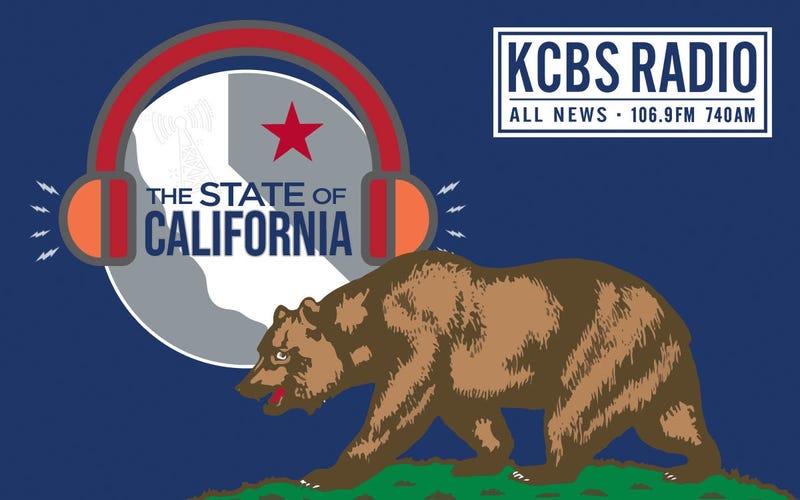
The eyes of the nation were on California on Tuesday, not because of the coronavirus, but because of a special election taking place during the Covid-19 pandemic.
It is a fiercely contested battle for a vacant seat in Congress from Los Angeles and Ventura counties, one that has drawn the attention of everyone from President Donald Trump to Barack Obama.
California’s 25th congressional district covers most of Northern Los Angeles County, including places like Palmdale, Santa Clarita, Lancaster, running west to Simi Valley.
Republicans held this seat for 26 years and was reliably red until 2018, when Democrat Katie Hill flipped it blue. She had to resign, however, after less than a year in office because of a sex scandal, and now the GOP has a shot at flipping a blue seat to red in California for the first time since 1998.
Democratic Assemblymember Christy Smith is running against Republican businessman and former Navy Fighter Pilot, Mike Garcia. This was always going to be a tough seat for Democrats to defend, which was made even tougher because it’s happening in a special election in the midst of the coronavirus pandemic. The turnout is anyone’s guess, and there have been all sorts of controversies in this race.
Jaime Regalado is professor emeritus of Political Science at Cal State Los Angeles, and the former executive director of the Pat Brown Institute of Public Affairs. He joined KCBS Radio's "The State Of California” to discuss the race.
Because it’s close, it’s an open seat, and a special election at that.
Republicans are hurting nationally in a sense that their president has been very much an issue, in terms of leadership and in terms of what’s happening with the economy and the coronavirus.
So this is a chance for Republicans to pick up a potential seat, a Congressional seat at that, and as you mentioned, at the offset that would have happened for the first time in California in 22 years.
So it is very, very competitive even though the district, in terms of registered voters, leans blue, we don’t know what the turnout is going to be like by the end of today [Tuesday>.
Typically, in special elections or midterm elections, Republicans do better because they’re older, and tend to be more conservative and whiter. And those on the part of the Democrats tend to be younger, much more diverse—ethnically and racially—and have a stark tendency of voting left and often in those lower marquee kind of races. And this is seen as that, locally, by some.
Probably not a whole lot. Those who do [turn out> tend to be democrats. Republicans do have a history of doing better, both going to the polls but also voting by mail, and the increasing number of republicans, especially over the last 10-15 years in the state, where voting by mail has been quite dramatic. Although, democrats have caught up.
But, there is the Katie Hill factor that may well depress a bit of the turnout and part of the democrats who are so excited in 2018 to finally get a candidate who was able to flip the seat from red to blue, but now being looked at with a great deal of disenchantment after, as you mentioned, less than one year in office. They kind of forced the special election on the district.
So turnout is going to be major. In-person turnout is probably going to be hampered, much more than normally would be by those two factors: one is the pandemic, and the second is the question of how depressed some of the democrats might be who voted in 2018 for the democratic candidate who won and going to simply not go outdoors to do the same thing in 2020.
There are many who are, but some of those who came out in 2018 for the first time to vote and were won over by this young, dynamic woman, who looked like she was going to be a political rocket if and when she was going to be elected in D.C., may not come back. The stronger, more traditional democratic voter in the district who has voted over and over again will come back, but it’s the more marginal voters among the democrats that came out in storm force in 2018, that’s simply for this race, but across the nation for many of the democratic candidates. And so we’ll see how depressed some of those might be on the younger side who voted in the 2018 for Hill but may be so disenchanted to not come out for Smith in 2020. But I may be totally wrong.
Well, I think republicans, nationally, are looking for any kind of a boost. Even one that might be short term. It may last only six months before the next election, and we’re likely to see Garcia and Smith back facing each other then, we can count on it.
Having said that, for Republicans, it’s a shot in the arm, something robust, a flipped seat no matter how short or long, but it would give them the advantage of incumbency heading into what promises to be a heavy, heavy turnout for the 2020 election with the Presidency at the top of the ticket.
If Garcia does win, no doubt about it. A shot in the arm is the wind at the Congressional Republicans back nationally because of this? No. Not by any means. But it would be a temporary shot in the arm. But if it was November 3rd, 2020, and this was happening, it would be much more of a major crowning point.
